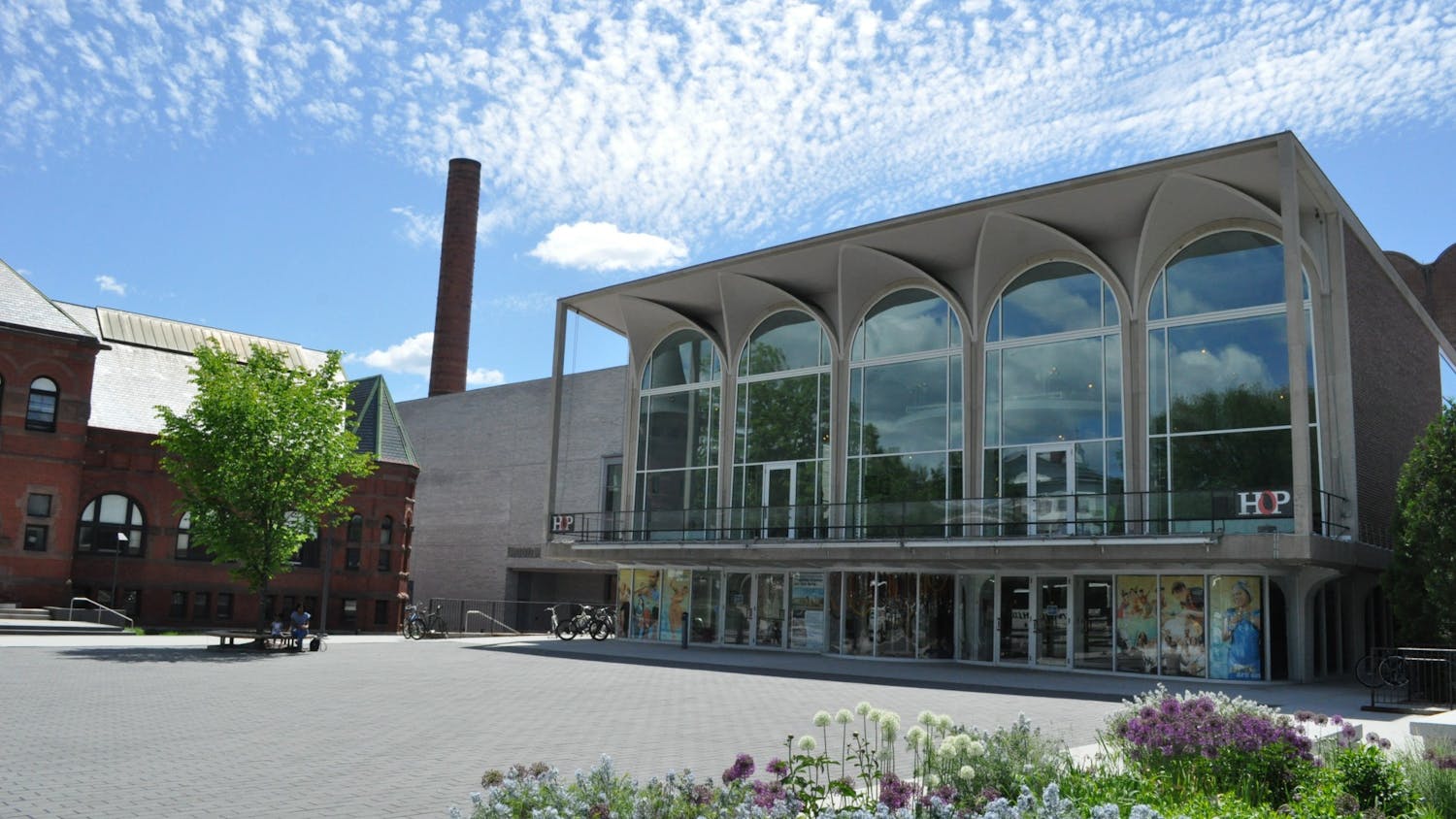Christa Parravani is a visiting professor teaching courses in photography at the College this Spring term. A full-time lecturer in photography at Keene State College, Parravani is currently teaching an introductory course in photography that she focuses on the relationship between photography and literature -- her primary area of interest within the medium.
Her most recent photo-anthology, from which the photographs on display in the Hopkins Center were chosen, is a photographic rendering of the "Spoon River Anthology," a 1915 collection of free-form poetry by Edgar Lee Masters that collectively chronicles life in the fictional town of Spoon River, Illinois.
The original work describes over 200 characters -- each poem is an epitaph of one of the deceased citizens of Spoon River. Parravani characterized the collection as "emotionally in tune and expressive," a characteristic that she tried to maintain in her photographic translation.
In "Julia Miller," Parravani depicts a woman leaning against a moss-covered tree, seemingly in reverie. Only a knowledge of Masters' epitaph reveals the pregnancy, false marriage and suicidal thoughts that trouble the character's mind -- the "blackness that came over my eyes," as Masters writes.
Trans-genre relationships have always appealed to professor Parravani, who is also interested in identifying connections between theater and photography. Incidentally, her first acting experience was in a stage-adaptation of "Spoon River."
Parravani added that she is fascinated by "the psychology of the landscape," and this theme is certainly evident in her exhibit in the Hopkin's Center. The narrative figures in the photographs on display are often almost lost within the vivid greens of a living, breathing landscape.
A graduate of Bard College, Parravani noted that her first creative interest was in creative writing but siad she eventually settled on photography because her identical twin sister, also a Bard College alumna, had already forged a career as a writer.
Currently Parravani is in the process of creating her own camera, an 8x10-inch stereographic view camera that creates 3-D images. She hopes to employ her camera at the "Twinless Twins" convention this July, a gathering of twins or multiples who have lost their siblings due to death or estrangement. This project has personal meaning for Parravani, whose twin sister recently passed away.
Parravani's photographic undertakings often take years to complete, but she noted that the inspiration for each new project often emerges from her previous work. Perhaps students passing through the Hopkins Center are being treated not only to the lush views of her detailed photographs, but also to a glimpse into her future directions.




